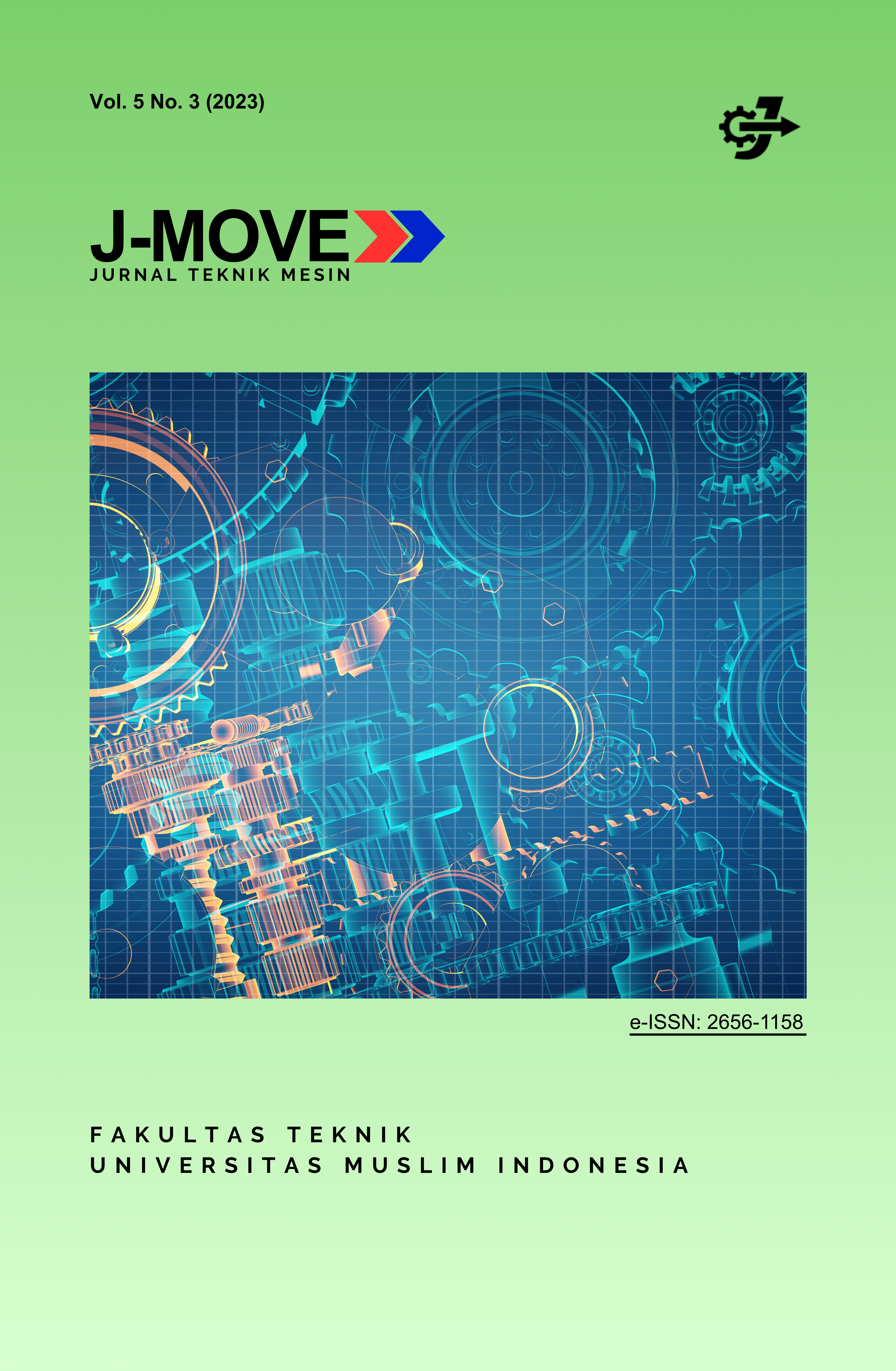Effect of SAE 20W-50 Oil Quenching on Microstructure and Hardness of Leaf Springs
Keywords:
Hardening, Kekerasan, Struktur MikroAbstract
The hardening process was carried out at three heating temperatures—800℃, 850℃, and 900℃—on both new and used leaf springs, using SAE 20W-50 oil as the quenching medium. The changes in mechanical properties observed between the unheated specimens and the heat-treated specimens included hardness values and microstructural characteristics.
For the untreated specimens, the hardness values of the new leaf spring were 129 N/mm² (left side), 137 N/mm² (middle), and 126 N/mm² (right side). For the used leaf spring, the hardness values were 117.7 N/mm² (left side), 121.2 N/mm² (middle), and 124.2 N/mm² (right side). At 800℃, the new leaf spring showed average hardness values of 100.6 N/mm² (left), 105.1 N/mm² (middle), and 104 N/mm² (right). At 850℃, the values increased to 127.6 N/mm² (left), 125.6 N/mm² (middle), and 130.7 N/mm² (right). At 900℃, the new leaf spring achieved the highest hardness values of 142.7 N/mm² (left), 144.6 N/mm² (middle), and 141.3 N/mm² (right).
For the used leaf spring, the average hardness values at 800℃ were 81.1 N/mm² (left), 97.5 N/mm² (middle), and 88.6 N/mm² (right). At 850℃, the hardness values were 97.5 N/mm² (left), 117.1 N/mm² (middle), and 100.1 N/mm² (right). At 900℃, the values increased significantly to 129.9 N/mm² (left), 141.5 N/mm² (middle), and 141.9 N/mm² (right).
These hardness results directly influenced the microstructure of the tested specimens, where microstructural transformations were observed depending on the heating temperature and the condition (new or used) of the leaf spring.
Downloads
Published
Issue
Section
License

This work is licensed under a Creative Commons Attribution-ShareAlike 4.0 International License.
All articles published in J-Move Journal (Journal of Mechanical Engineering Innovation and Development) are licensed under the terms of the Creative Commons Attribution-ShareAlike 4.0 International License (CC BY-SA 4.0).
- Copyright is retained by the authors.
- Articles may be used, copied, shared, and adapted by others for both commercial and non-commercial purposes, provided that:
- Proper attribution is given to the original authors and to the journal as the place of first publication.
- Any derivative works (adaptations, modifications, or developments) must be distributed under the same license (CC BY-SA 4.0).
By submitting their manuscript to this journal, authors agree that their work may be distributed and reused in accordance with this license.








